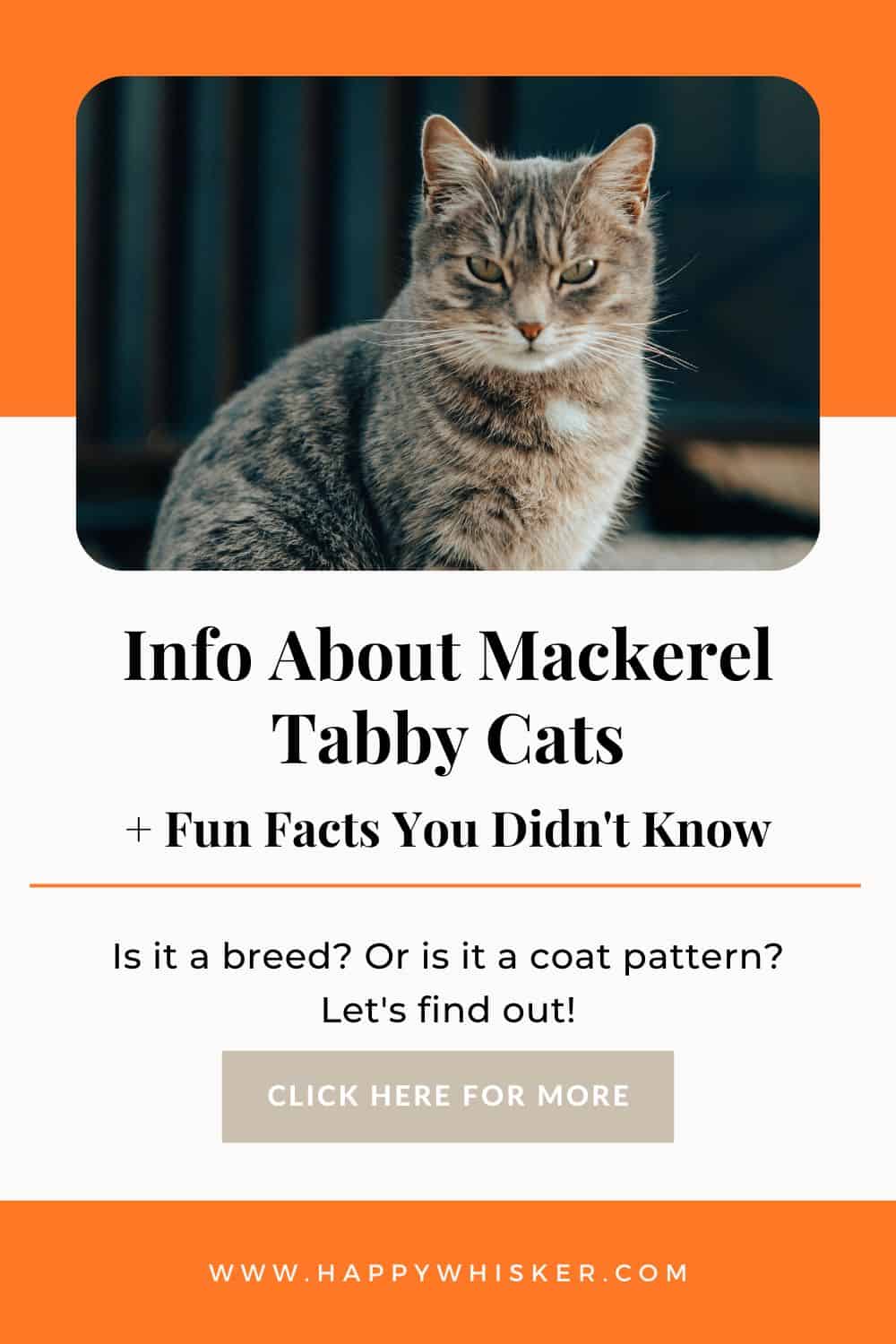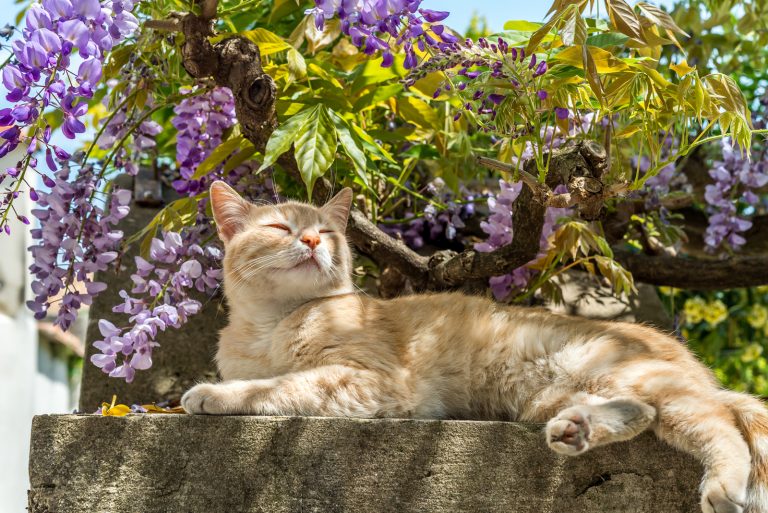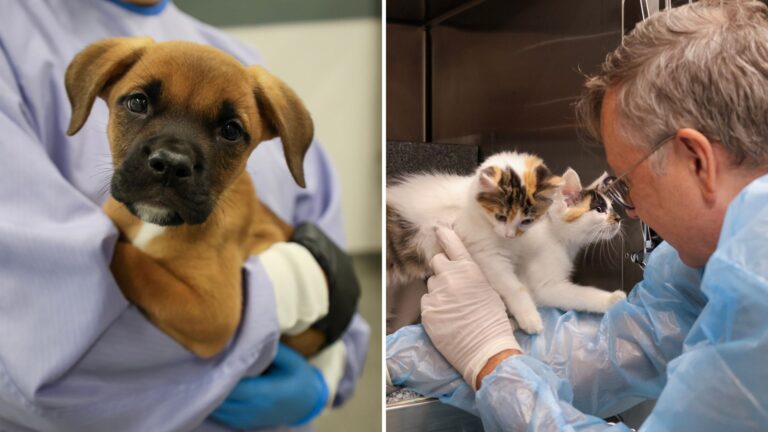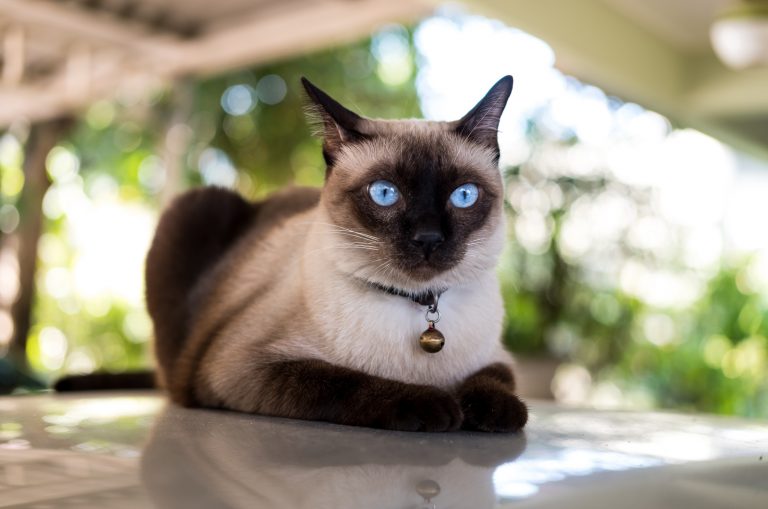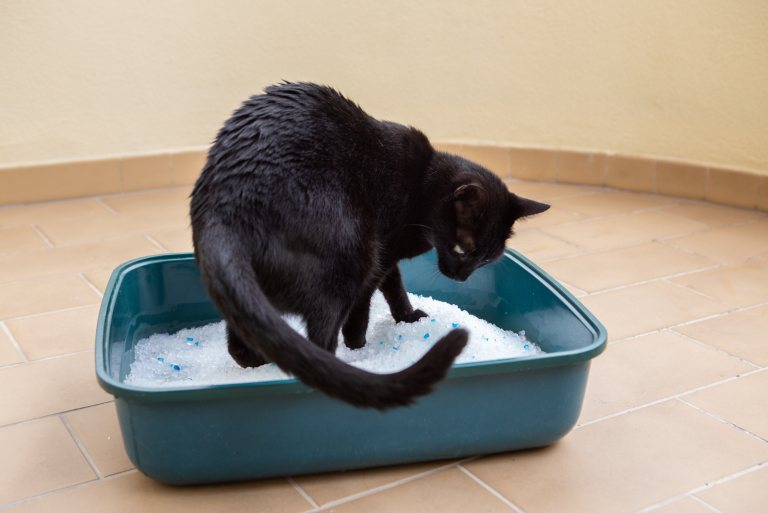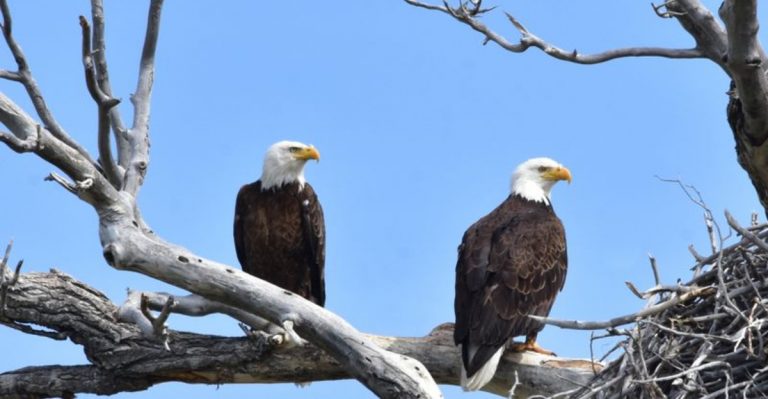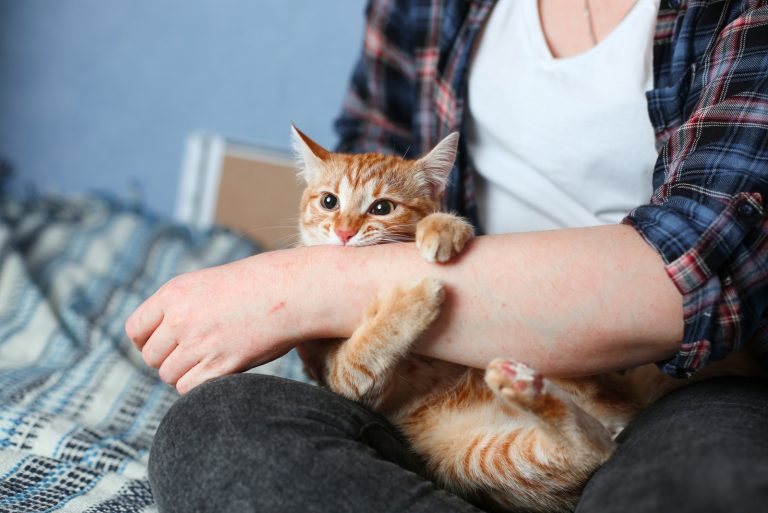Things About Mackerel Tabby Cats You Didn’t Know
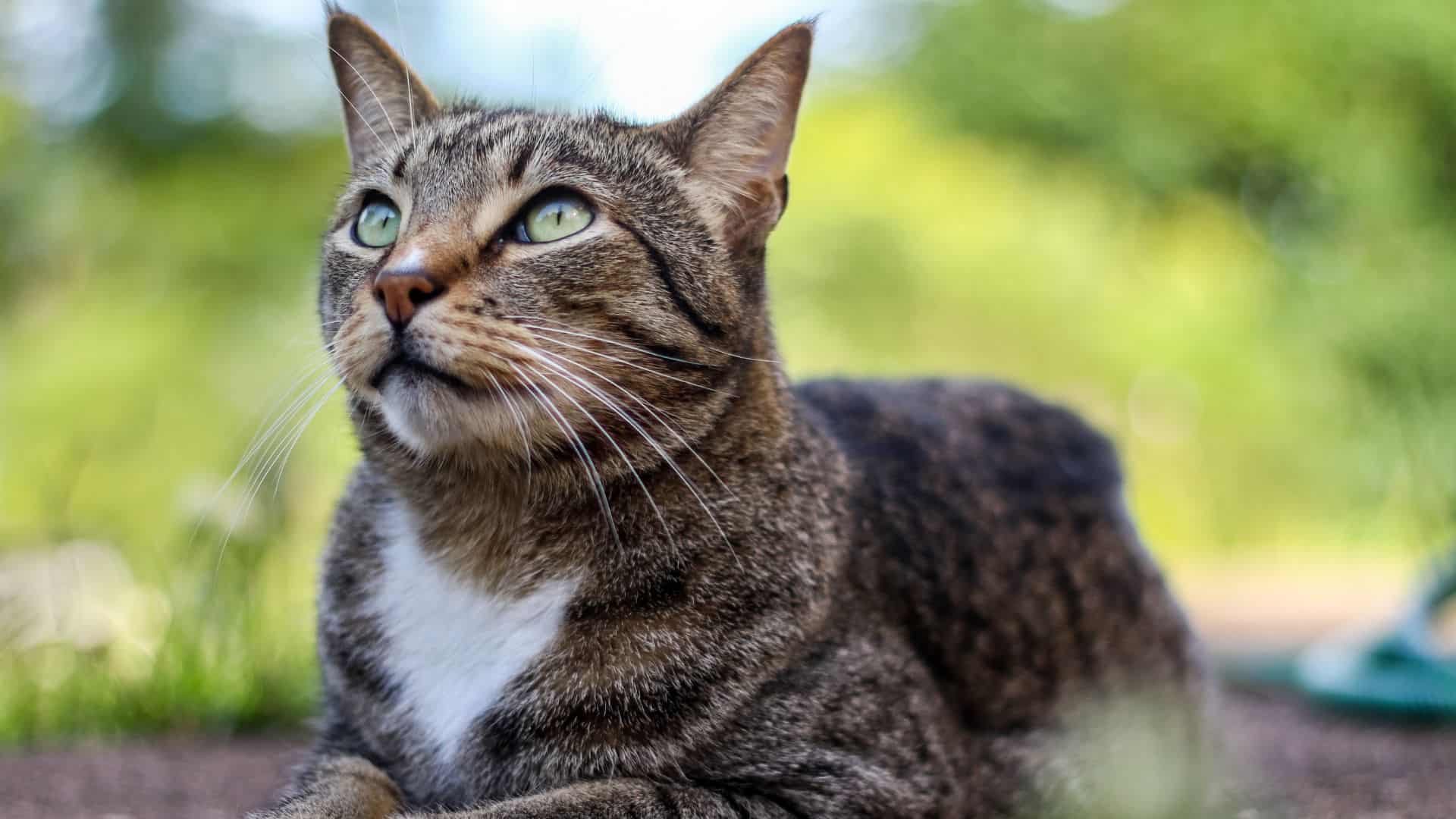
Mackerel tabby cats, or the mackerel tabby pattern, to be exact, have gotten some attention over the years. There have been many theories as to where the pattern gets its name and what other tabby cat colors and patterns there are.
These interesting cats with tiger stripes all over their bodies are, above all else, highly intelligent and curious. But what exactly is a mackerel tabby? Is it some specific breed of cat?
No, the mackerel tabby is a coat pattern, and there are many cat breeds that can have it. Read on to find out more interesting facts I’m sure you didn’t know before!
All About Mackerel Tabby Cats
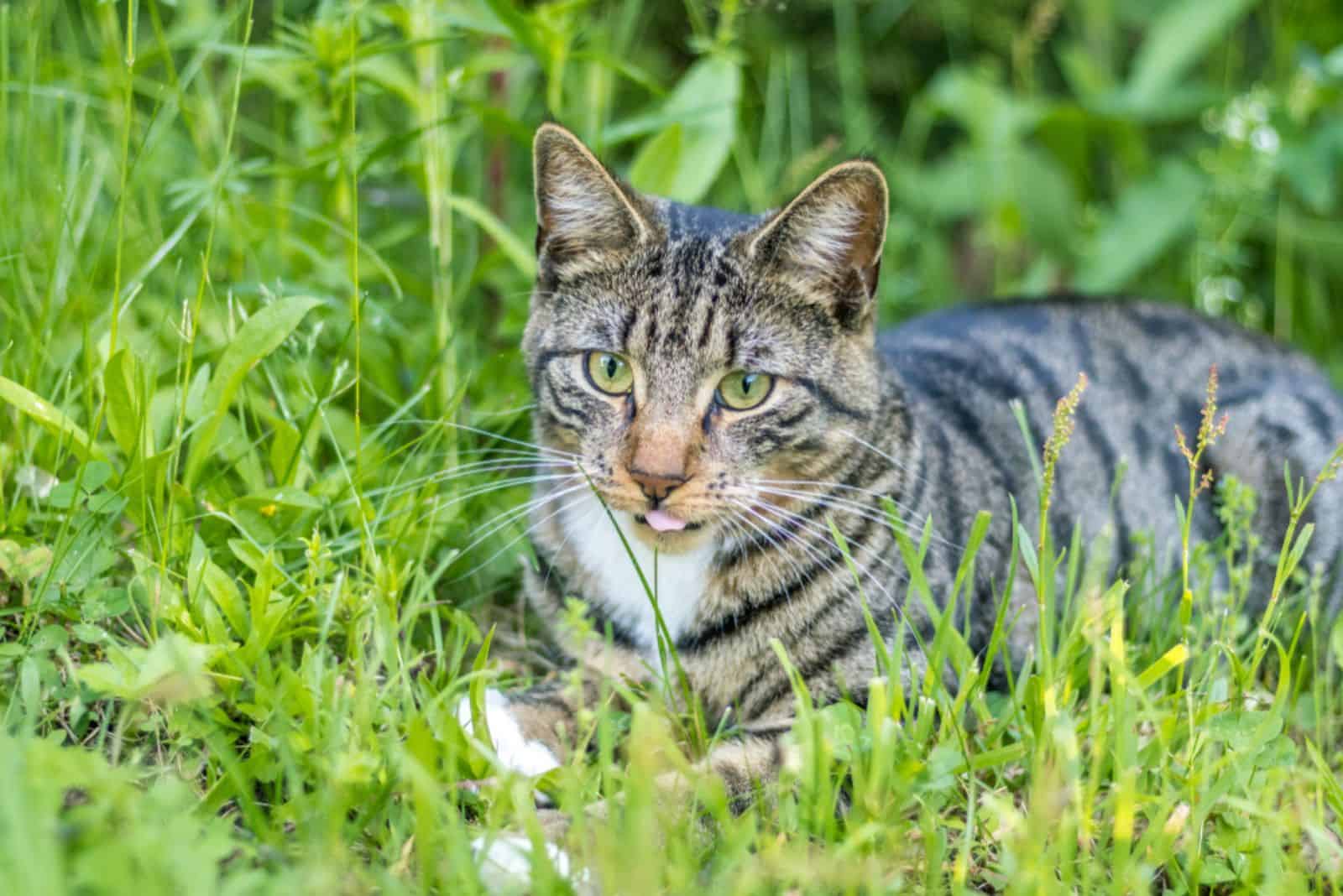
The tabby cat is a type of cat with a unique coat pattern. They are sometimes referred to as a breed, but tabby is actually a pattern, a pattern many cats can have. The mackerel tabby pattern is most commonly connected with the traditional tabby pattern.
The stripes go across the cat’s whole body, at a right angle to its spine. Mackerel tabbies are sometimes called “tiger cats” because their stripes strongly resemble those of a tiger.
There are many domestic cats that have this beautiful mackerel tabby coat pattern, such as the Maine Coon or the Norwegian Forest cat. This coat pattern usually has solid lines, but they can sometimes appear broken.
All in all, no matter the type of stripes, they’re always inherited.
A Breed Or A Pattern?
As I already said, tabby refers to a coat pattern and is not the name of a specific breed of cat. Some cat lovers find this unusual or surprising, but the term tabby refers to all cats that carry the tabby gene, which can result in a few different coat patterns.
Tabby patterns are as common as they are beautiful and can be found in many different cat breeds. It also comes in different colors but the most common is gray, orange, cream, and brown.
Where Does The Pattern Come From?
According to the researchers, the DKK4 gene codes the pattern of thin and thick skin during the development of kittens in the womb.
Those thick patches that have more DKK4 genes get darker fur as the cat grows up, and thinner patches have less DKK4 present, so those have lighter fur color later on.
This difference between thick and thin skin can be detected before the fetus develops hair follicles.
See also: Grey Tabby Cat – Interesting Facts About These Beauties
Origin Of The Name
The term tabby is derived from attābī, according to the Merriam-Webster dictionary. Aattābī is a type of silk fiber that’s produced in Baghdad and is named after the neighborhood it’s been created in.
The French called it tabis, and then it became tabby in English somewhere in the 17th century. In the late 18th century, the term tabby began to be used for describing a certain type of cat rather than a type of cloth.
The term mackerel came into existence because the stripes of this pattern go down and away from the cat’s spine, resembling the skeleton of a fish, so today we have mackerel tabby cats as well.
What About The “M” Symbol?
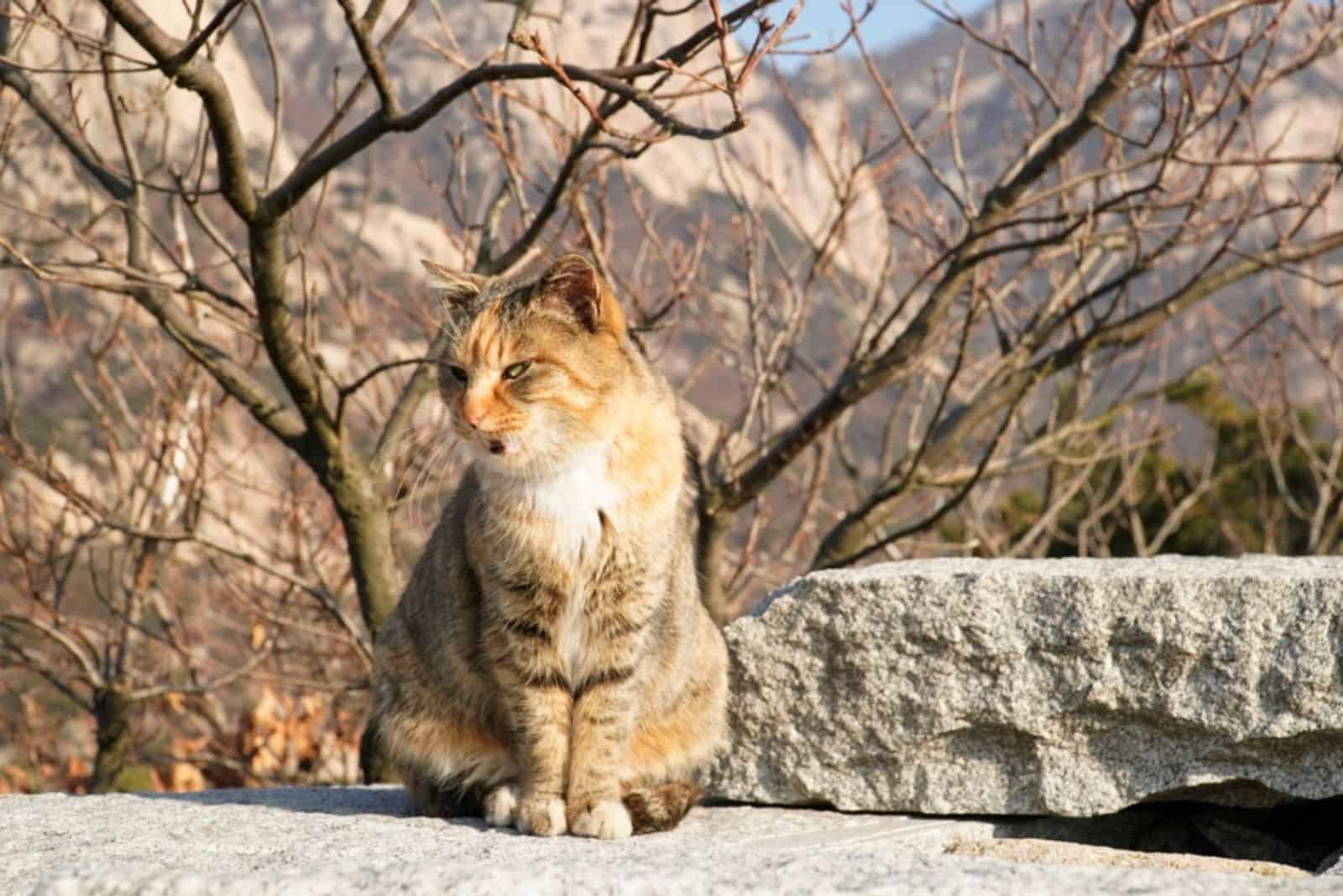
The “M” symbol, i.e. the shape on the cat’s forehead, is one of its most distinguishing features. This particular trait has a surprising number of folk tales surrounding it that date back for millennia.
Mau’s Mark
For the ancient Egyptians, cats were known as Mau, so the “m” was thought to be a reference to that.
Baby Jesus & Mary
There are several variations concerning Christianity and the “m” on the tabby cat’s forehead. There’s one involving Jesus, Mary, and a tabby cat.
According to some legends, baby Jesus wouldn’t stop crying, and a tabby cat climbed in beside him and started purring, and then Jesus stopped crying and fell asleep because of the warmth and calmness the tabby cat provided.
Then, out of gratitude, Mary marked the cat’s forehead with the letter “m”.
Mary & The Venomous Snake
In a different tale, Mary marked the tabby’s forehead because the cat killed a snake that was setting out to bite and poison baby Jesus.
Although some people argue that Mary has nothing to do with it, the tabby was blessed for comforting and protecting baby Jesus.
The Sleeve Of Muhammad
There’s another story that involves a tabby cat and the Islamic prophet Muhammad. The tale goes that a tabby cat fell asleep on the prophet’s sleeve, and when the prophet went to pray, instead of waking or moving the cat, he cut off the sleeve and left it there.
Later on, the same cat warned the prophet of some danger, and he blessed the cat with the “m” marking. According to the legend, he also gave cats the ability to always land on their feet.
In Islamic cultures, cats are cherished and respected greatly, even today. In some areas, cats are even allowed to go inside mosques.
Just Frown Forehead Lines?
Others, however, believe that the “m” is simply an occurrence of frown lines caused by a cat’s intense stares at prey or something. Whichever the meaning, I know we all like this specific, eye-catching, and cute feature of tabby cats.
Check out: Orange Tabby Cat – 23 Facts About These Gorgeous Kitties
Other Tabby Patterns

So, I’ve covered what a mackerel tabby is like. It has narrow stripes that go parallel down the cat’s sides. In the ideal world, stripes are non-broken and evenly arranged.
Let’s have a quick overview of the other four tabby cat patterns.
Classic Tabby
A classic tabby cat has a coat that reminds one of a marble cake (or is it just me? lol). It has bold, swirling patterns that go along the cat’s sides.
Some countries also refer to this pattern as “blotched” tabby. So, the pattern considered the classic tabby coat is covered in circular blotches.
Ticked Tabby
A ticked tabby pattern is also known as an agouti-hair tabby or Abyssinian pattern. The ticked pattern lacks the traditional spots and stripes on the cat’s body and sometimes doesn’t appear as a tabby at first.
The ticked tabby pattern is most prominent in the Abyssinian cat breed, but it can be found in some other breeds as well.
Spotted Tabby
A spotted tabby pattern is one that has spots on both sides of the cat’s body. They can be big or small, and sometimes the spots resemble mackerel stripes.
The spots in this pattern can be oval, round, or even rosettes. Then again, the mackerel tabby pattern can resemble the spotted one when the stripes are broken.
Patched Tabby
A patched pattern is one that has separate brown and red tabby patches. Torbie is a term used to describe a tortie (tortoiseshell cat) that carries the tabby gene as well.
Patched tabby cats can also exhibit any of these other tabby patterns I’ve described, and the markings will typically be more visible on the cat’s head and legs.
You might want to check out: Top 10 Fluffy Orange Tabby Cats You Will Want To Cuddle With
Fun & Interesting Facts About Mackerel Tabby Cats
I’ve covered the myths and legends about the mackerel tabby name origin, but there’s more to it. Mackerel tabbies are not only beautiful, but they’re also incredibly smart and interesting on so many levels. Let’s check it out!
1. Mackerel Tabbies Equals Extroverts

While color alone isn’t likely to characterize your cat, the personality of mackerel tabbies is simply seen as adorable. They have the reputation of being social and cute cats, and people’s belief in it dramatically influences their choice of cat.
Even though color can’t significantly impact a cat’s personality, mackerel tabbies are considered the most sociable and extroverted cats.
Some biologists claim that their extroverted nature is related to their fur color, and that’s how this is their most distinguishing characteristic.
2. Mackerels Are The Smartest Tabbies
A lot of mackerel tabby owners believe that their cats are smarter than other cats. And they are correct. Mackerel tabbies are more intelligent than many other cats. They’re also known as frisky, adventurous, and extremely curious.
To show off their intelligence, some cat owners have trained their mackerel tabbies to signal when they require something, like food or for them to open the door.
Mackerel tabbies are also prone to having a dog-like personality; they love to play fetch. These cats are able to quickly learn the routines of their owners and frequently predict what they’re going to do next.
3. Mackerels Are The Oldest Tabbies
The first pattern that appeared in domesticated cats was the mackerel tabby. It is believed to have descended from wildcat genes.
It is thought that the European wildcat and African wildcat mated, which resulted in a cat with a mackerel tabby pattern that’s been present to this day.
4. Wait A Meowment, Mackerels & Witches?
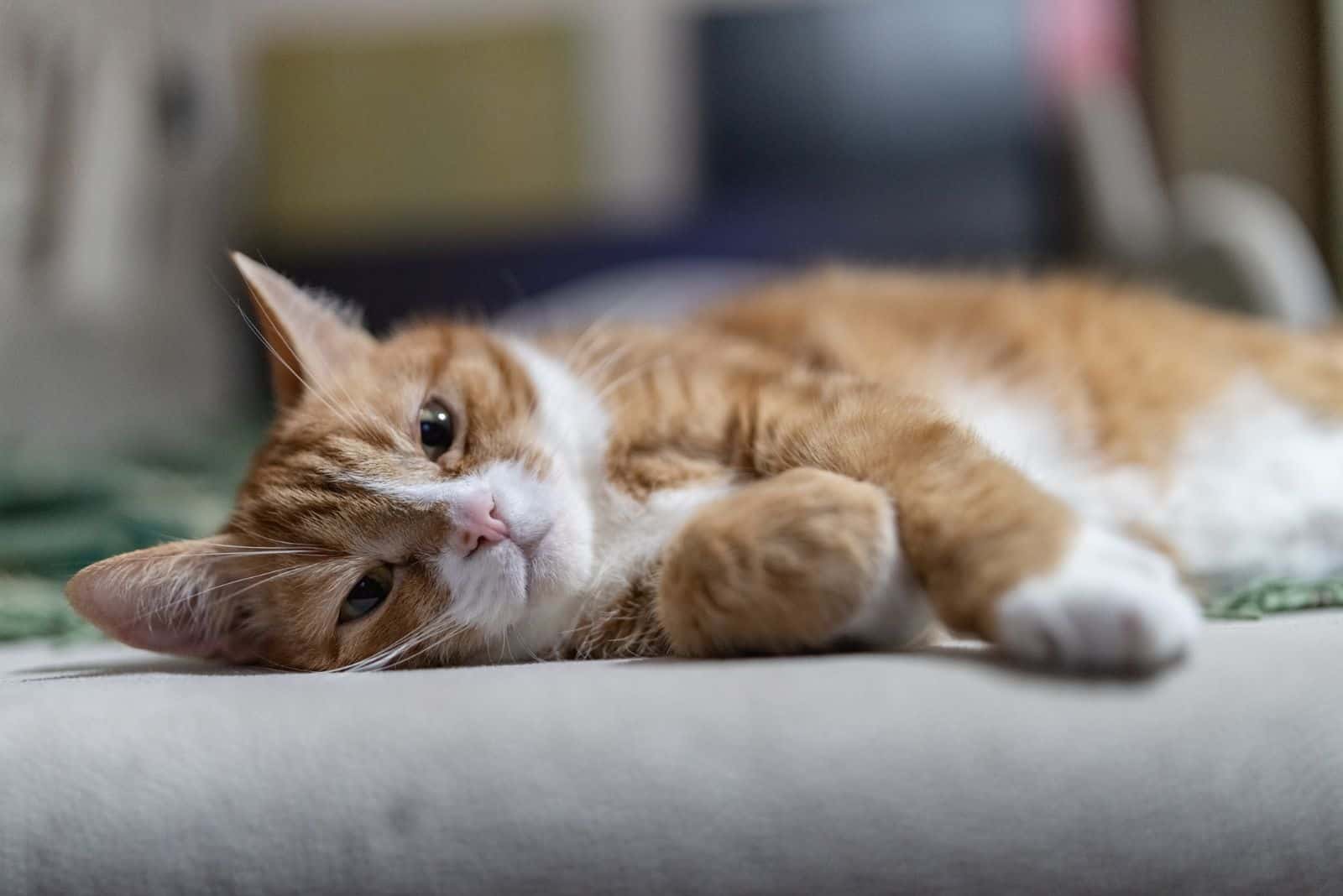
Many legends and myths surround the unusual mackerel tabbies. Although many people believe that black cats are traditionally associated with witchcraft and witches, that is not true.
The witches from the 16th and 17th centuries adopted mackerel tabby cats as “servants” who served the witches as assistants in magic.
Some people believed that mackerel tabbies were reincarnations of deceased victims of the witches, who were then reincarnated as cats. Other people thought that mackerel cats were witches themself.
However, despite all these tales, mackerel tabbies have long been associated with good fortune.
5. Mackerels Are The First Domestic Cats?!
Tabby cats were the first members of the Felidae family to become domesticated. These first domestic cats were used as working cats. They were treated as pets but as farmers’ helpers as well.
Farmers quickly realized the value of keeping tabby cats nearby because they turned out to be excellent mousers. Later on, tabby cats were also used as mousers on merchant ships.
6. Mackerels Are The First Tabbies?
The mackerel pattern is, as I mentioned previously, thought to be the first tabby pattern. The pattern is thought to have evolved from a genetic cross between wildcats.
This mackerel pattern is stronger and has more pronounced stripes. Then, later on, it’s thought that other tabby patterns evolved through gene mutations from this one.
7. Mackerels Come In Different Colors
Most cat lovers think of coats that are gray-based with dark brown or black stripes when you mention the mackerel tabby pattern. However, they can come in different coat colors too.
Tabbies typically have an orange or gray base with black or brown stripes, while some can have silver or white stripes.
8. Mackerels Are Record-Holders
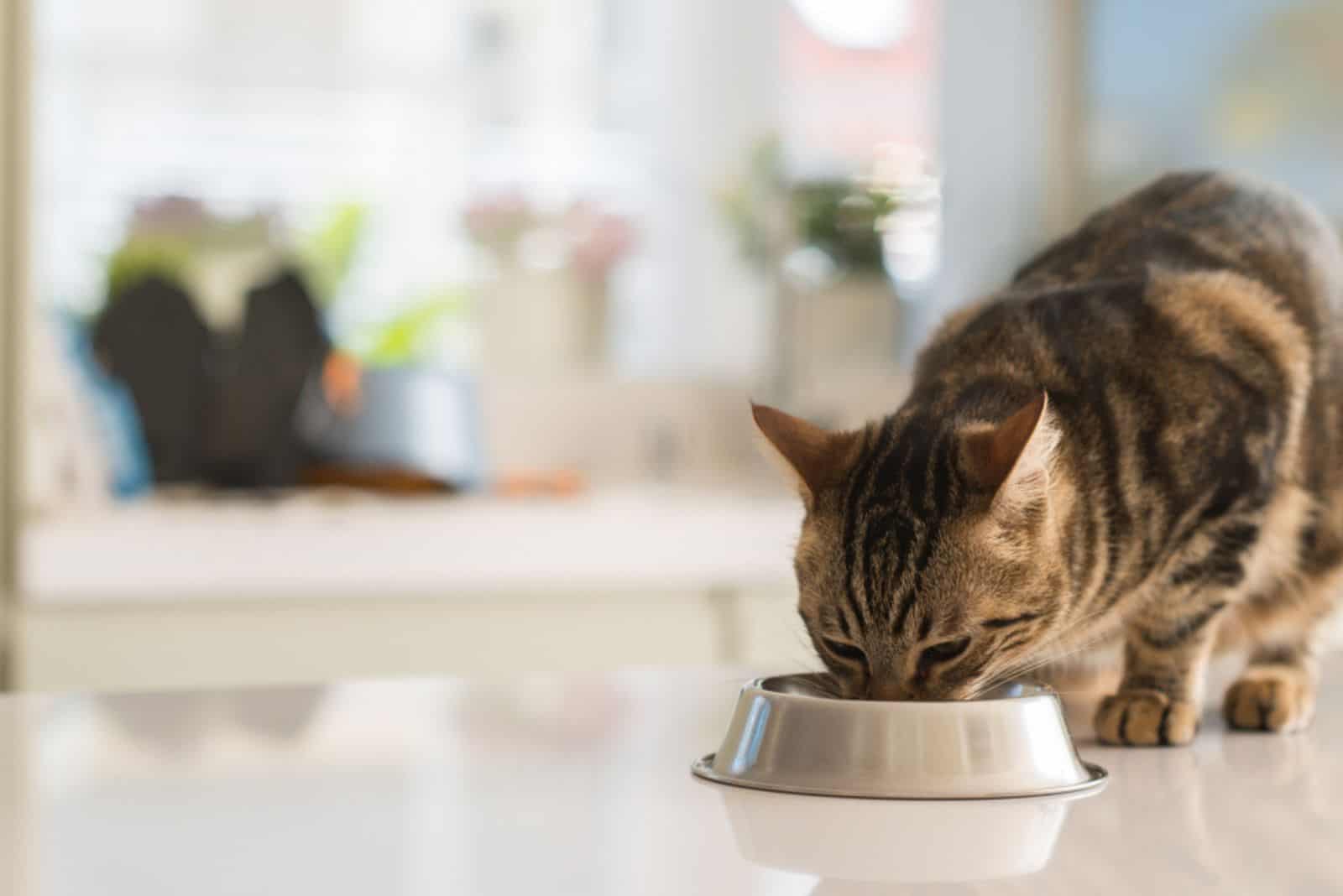
Himmy, a mackerel tabby cat, once held the title of the World’s Fattest Cat. He had a 33-inch waistline and weighed 46 lbs.
However, shortly after he died, the Guinness Book of World Records withdrew the award in order to discourage people from intentionally feeding and getting their cat fat in order to break the record.
9. Mackerels Are The Adventurers Of Tabbies
The majority of mackerel tabby cats are extremely playful. They simply enjoy spending time and playing with their owners, and they require a lot of entertainment sources and different toys.
These cats are also known for their adventurous nature and desire to thoroughly investigate everything around them. They are likely to follow you around, snuggle with you, but also play fetch (sometimes even better than dogs).
10. Ok, What Is It With The Name Mackerel?
I’ve written down all the legends and folk tales surrounding the origin of the mackerel tabby’s name, but they are most likely named after the fish. Mackerel is a fish with a distinct striped pattern that goes from the fish’s tail to the tip and along the back.
The cat’s name is derived from the fish skeleton that’s left after the meat of the fish has been removed from the bones.
You might be interested in: Tabby Vs Bengal Cat – How To Tell Them Apart? (With Pictures)
Final Thoughts On Mackerel Tabbies
Well, I hope you have now got the idea of what a mackerel tabby is actually like. There are many cat breeds that can have a mackerel tabby pattern, such as the Maine Coon, Domestic Shorthair, Toyger, British Shorthair, and so on.
So, now that you’ve learned where the mackerel tabby name comes from and all these cool facts about it, go out and spread your knowledge! Haha, just kidding, but I hope this was as much fun for you as it was for me.
Thanks for reading, I hope you’ll stick around!
Like this post? Share or pin it for later!
